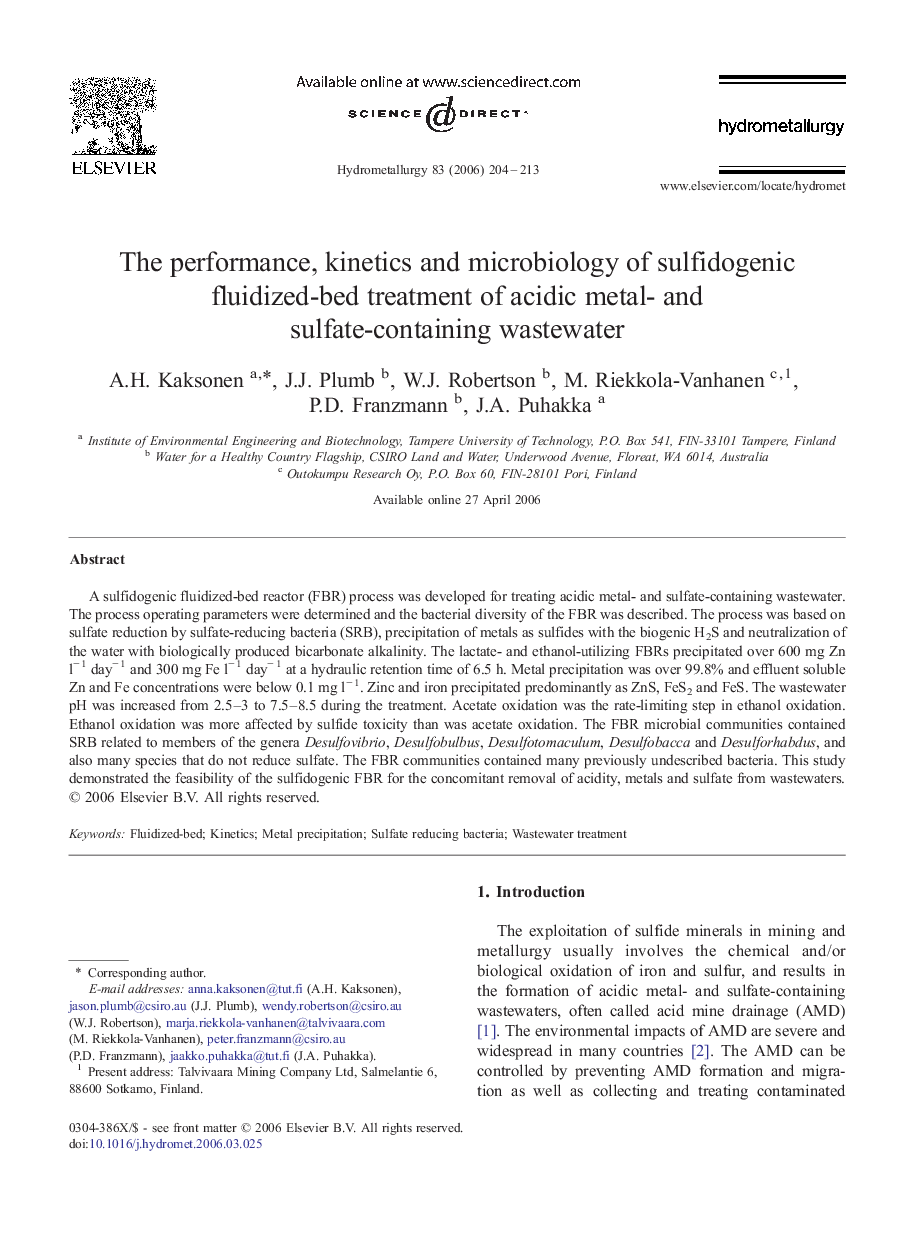| Article ID | Journal | Published Year | Pages | File Type |
|---|---|---|---|---|
| 213610 | Hydrometallurgy | 2006 | 10 Pages |
A sulfidogenic fluidized-bed reactor (FBR) process was developed for treating acidic metal- and sulfate-containing wastewater. The process operating parameters were determined and the bacterial diversity of the FBR was described. The process was based on sulfate reduction by sulfate-reducing bacteria (SRB), precipitation of metals as sulfides with the biogenic H2S and neutralization of the water with biologically produced bicarbonate alkalinity. The lactate- and ethanol-utilizing FBRs precipitated over 600 mg Zn l− 1 day− 1 and 300 mg Fe l− 1 day− 1 at a hydraulic retention time of 6.5 h. Metal precipitation was over 99.8% and effluent soluble Zn and Fe concentrations were below 0.1 mg l− 1. Zinc and iron precipitated predominantly as ZnS, FeS2 and FeS. The wastewater pH was increased from 2.5–3 to 7.5–8.5 during the treatment. Acetate oxidation was the rate-limiting step in ethanol oxidation. Ethanol oxidation was more affected by sulfide toxicity than was acetate oxidation. The FBR microbial communities contained SRB related to members of the genera Desulfovibrio, Desulfobulbus, Desulfotomaculum, Desulfobacca and Desulforhabdus, and also many species that do not reduce sulfate. The FBR communities contained many previously undescribed bacteria. This study demonstrated the feasibility of the sulfidogenic FBR for the concomitant removal of acidity, metals and sulfate from wastewaters.
